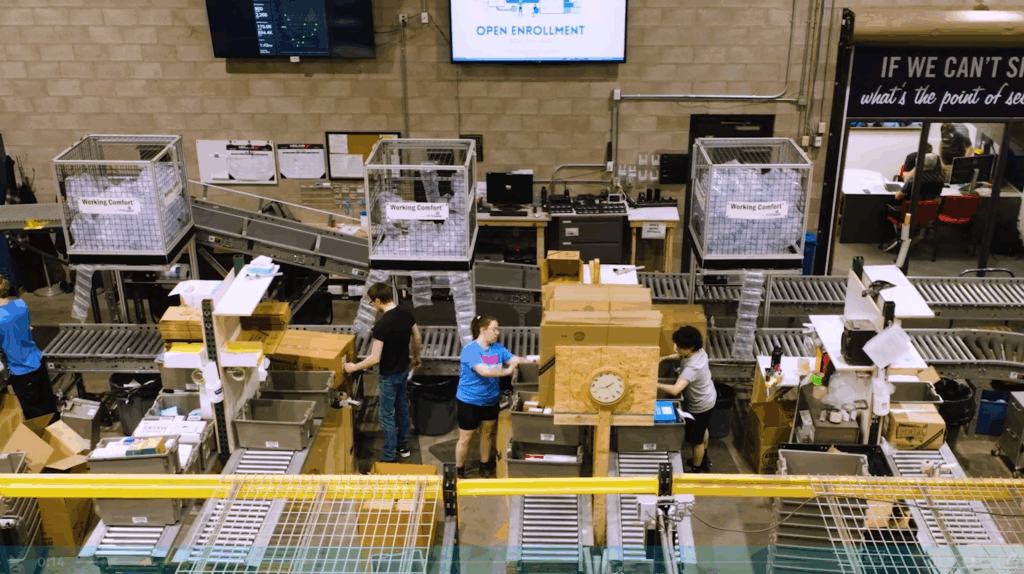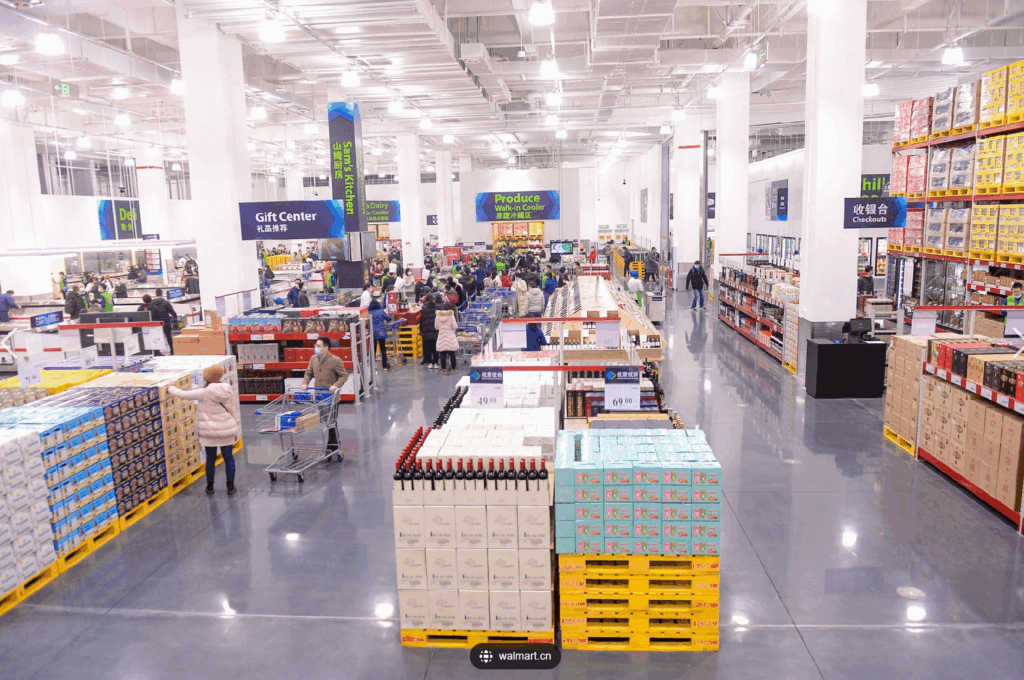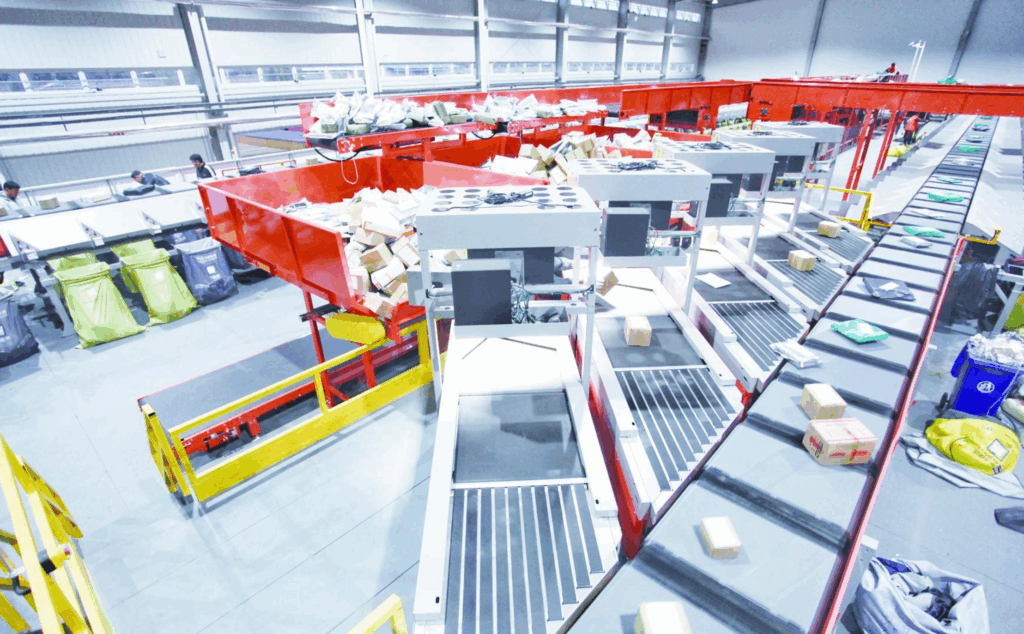The department store retail industry is standing at a crossroads of transformation. Intense market competition, meager profit margins, persistent labor shortages, coupled with the rapid iteration of consumer demands, have put this already challenging industry under unprecedented pressure. As the “golden age” of large supermarkets fades, and online shopping, community stores, and discount retailing become new growth drivers, how can we achieve efficiency breakthroughs through innovation in the fulfillment process? Visheer Intelligence’s automated fulfillment solutions for the department store industry are using technology to chart a transformation path for the industry from “scale expansion” to “precision response”.
Industry Changes: Trend Restructuring Behind Fulfillment Challenges
The fulfillment dilemmas in department store retailing have never existed in isolation; they are the result of the interplay of deep-seated industry trends. These trends, like invisible hands, are reshaping every link in the supply chain and forcing enterprises to rethink the underlying logic of fulfillment.
Market differentiation is dismantling the traditional retail landscape. On one hand, some discount stores continue to expand, entering the market with “low-price (rigid demand)” and forcing competitors to cut costs. On the other hand, consumers’ demands for personalization and segmentation are becoming increasingly prominent. The same group of people may be bulk purchasers at suburban supermarkets and fresh food buyers at urban convenience stores. This “one person, multiple roles” demand characteristic directly leads to a surge in the complexity of SKUs (Stock Keeping Units). Stores have to restock with smaller packaging units, further increasing fulfillment difficulties.
Packaging revolution is transmitting pressure from the product end to the fulfillment end. The rise of smart packaging has made product tracking and promotion more convenient but has also put higher demands on the recognition capabilities of warehousing systems. The popularization of sustainable packaging, although in line with consumers’ environmental demands, has increased operational complexity in sorting and palletizing due to its special material properties (such as fragility and limited load-bearing capacity).
The upgrading of service requirements has also caused fulfillment costs to soar. Large supermarket chains have set almost harsh standards for distributors’ delivery timeliness and order accuracy — from “next-day delivery” to “same-day delivery”, and from “full-case delivery” to “sorted by shelf position”. Behind each requirement is a restructuring of supply chain processes. Data shows that the improvement of service standards has increased the average sales cost per case of groceries by 12%, becoming an important factor eroding profits.

Logistics Dilemma: Collision Between Traditional Models and New Demands
As industry trends penetrate the fulfillment link, a series of in-depth logistics problems have begun to erupt. The core of these problems is that the traditional fulfillment system centered on “scale efficiency” can no longer adapt to the new demands of “small batches, multiple frequencies, and high precision”.
Balancing speed and accuracy has become the primary challenge. Consumers’ expectation of “instant gratification” has compressed the order processing time from “days” to “hours” or even “minutes”. But contradictorily, the order structure has become increasingly complex — an online order may include room-temperature food, frozen meat, fresh fruits and vegetables, etc. It is the difficulty of ensuring sorting speed while avoiding cross-contamination. Data from a supermarket chain shows that the error rate of online orders is three times that of offline orders, and the average cost of each correction is as high as $50.
Fluctuations in throughput test the flexibility of the supply chain. Holiday promotions, daily restocking peaks, and sudden surges in online orders may double the throughput of the distribution center in a short time. The traditional manual-dependent sorting mode often falls into the dilemma of “unable to recruit temporary workers” or “low efficiency due to insufficient training” when dealing with peaks. What’s more, the timeliness requirements of fresh categories have greatly compressed the space for “off-peak processing”.
The complexity of inventory management has also increased exponentially. The surge in SKUs (some supermarkets have exceeded 100,000 SKUs) has made inventory turnover a problem — the coexistence of out-of-stock of best-selling products and overstock of slow-moving products is common. At the same time, consumers’ extreme pursuit of “freshness” has forced enterprises to strictly implement the “first-in, first-out” principle, which puts higher demands on the batch management capabilities of the warehousing system. In frozen storage scenarios, manual sorting is not only inefficient but also has safety risks due to low-temperature operations.
The contradiction between space utilization and cost control is also prominent. Traditional distribution centers focus on “pallet-level storage” to maximize the use of three-dimensional space. However, nowadays, to meet the needs of community stores for “unpacking and restocking” and online orders for “single-piece picking”, a large number of goods need to be sorted on the ground, leading to a surge in demand for storage space. Data shows that the space utilization rate of distribution centers adapted to omnichannel fulfillment has decreased by 30% compared with the traditional model, while the rent cost has increased by 25%.

Solutions: Reconstructing the Fulfillment Chain with Automated Technology
Facing numerous dilemmas, the key to breaking through in the department store retail industry lies in building a new “flexible, efficient, and low-cost” fulfillment system with automated technology as the core. Based on in-depth insights into industry trends, Visheer Intelligence has proposed a series of targeted solutions to achieve efficiency improvement in the entire chain from warehousing to distribution.
Mixed Palletizing: Enabling “Arrive and Shelve” for Store Restocking
Mixed palletizing technology can be called an “efficiency bridge” connecting distribution centers and stores. Through preset algorithms, it automatically palletizes containers according to the store shelf aisle order, weight distribution (heavy goods at the bottom, light goods at the top), and category characteristics (separation of fresh and dry goods). This “customized according to usage scenarios” model allows store employees to directly push containers to the corresponding shelves without unpacking and sorting, increasing restocking efficiency by more than 40%.
The advantages of the automated mixed palletizing system are far more than that. In terms of space utilization, it can automatically optimize stacking density according to container sizes, increasing storage space utilization by 25%. In low-temperature environments, robots can replace manual labor to sort and palletize frozen products, reducing the risk of work-related injuries and ensuring operational accuracy. For fresh categories, the system can achieve seamless connection “from cold storage to distribution vehicles” through temperature-controlled conveyors, reducing losses caused by cold chain breaks.
Micro Fulfillment Center (MFC): A “Fulfillment Node” Close to the Consumer End
To address the high cost of the “last mile” of online orders, the Micro Fulfillment Center (MFC) has become an ideal solution. These small storage facilities embedded in urban business districts and communities, usually with an area of 500-2000 square meters, achieve “close-range fulfillment” through high-density automated storage (such as multi-layer shuttles and robotic shelves). After consumers place orders online, MFC can complete picking within 15 minutes, and with same-city distribution, achieve “1-hour delivery”.
Compared with large distribution centers, the core advantage of MFC lies in “precision coverage”. For example, MFCs around residential areas can focus on storing high-frequency products such as fresh food and daily necessities; those near office buildings can focus on instant consumer goods such as snacks and coffee. This “small but refined” layout not only reduces long-distance transportation costs but also can reduce online order fulfillment costs by 30% through the “front warehouse + store pickup” model.

Backroom Store: The “Invisible Engine” of Omnichannel Fulfillment
When offline customer flow and online order picking in large supermarkets conflict, the “backroom store” model provides an innovative solution. It transforms part of the existing supermarket area into a pure fulfillment space, realizing “unmanned” or “less-manned” order processing through automated equipment (such as AGV robots and intelligent picking glasses). In the backroom store, products are laid out to optimize picking efficiency rather than consumers’ shopping habits. With voice guidance and goods-to-person systems, picking efficiency is increased by 50%, and the error rate is reduced to below 0.5%.
The flexibility of the backroom store lies in “online-offline integration”. It can not only provide picking services for online orders but also directly restock store shelves through conveyors, realizing “one warehouse, two uses”. For chain enterprises, transforming some large stores into backroom stores can not only revitalize existing real estate resources but also avoid high investment in building new fulfillment centers, reducing the renovation cost per store by 60%.
Intelligent Technology Cluster: Dual Guarantee of Efficiency and Experience
In addition to solutions for core scenarios, Visheer Intelligence also empowers the entire fulfillment process through a “technology cluster”. For example, in the picking link, smart glasses use AR technology to display product positions and quantities in real-time, combined with voice commands, enabling new employees to achieve the efficiency of skilled workers. In the inventory management link, IoT sensors monitor temperature, humidity, and product shelf life in real-time, with data synchronized to the cloud platform to achieve “abnormal warning + automatic restocking”. In the distribution link, path optimization algorithms combined with real-time traffic data increase the number of delivery orders per vehicle by 20% and reduce the empty driving rate by 15%.
Future Outlook: From “Passive Adaptation” to “Active Leadership”
The fulfillment transformation of department store retail has never been a simple “technology replacement” but a model restructuring from “enterprise-centered” to “consumer-centered”. When automated technology deeply penetrates every link of the supply chain, the industry will usher in three key changes:
- First, from “scale-driven” to “flexible response”. The future fulfillment system will no longer pursue “the larger the more efficient” but can quickly adjust according to order fluctuations — increasing throughput through robot clusters during peak seasons and reducing equipment energy consumption during off-seasons to achieve “on-demand configuration”.
- Second, from “single channel” to “global collaboration”. The picking of online orders, restocking of community stores, and pallet distribution of large supermarkets will share the same intelligent scheduling system, realizing global optimization of inventory and transportation capacity through a data center to avoid resource waste.
- Third, from “cost center” to “profit engine”. The fulfillment link will no longer be just a cost burden but can also feed back front-end operations through data — for example, optimizing product combinations by analyzing order structures, and guiding store location selection through delivery timeliness data, making the supply chain a core competitiveness of enterprises.
The competition in department store retail will ultimately be a competition in fulfillment efficiency. In Visheer Intelligence’s solutions, automated technology is not only a tool to reduce costs but also a link connecting consumer demands and supply chain capabilities. When technology and scenarios are deeply integrated, and efficiency and experience are improved simultaneously, the department store retail industry will surely break through the growth dilemma and usher in a new era of development.